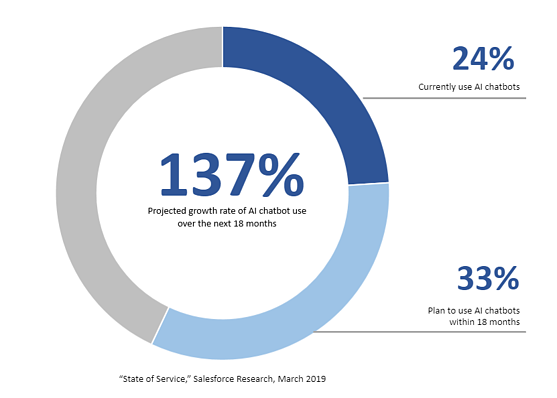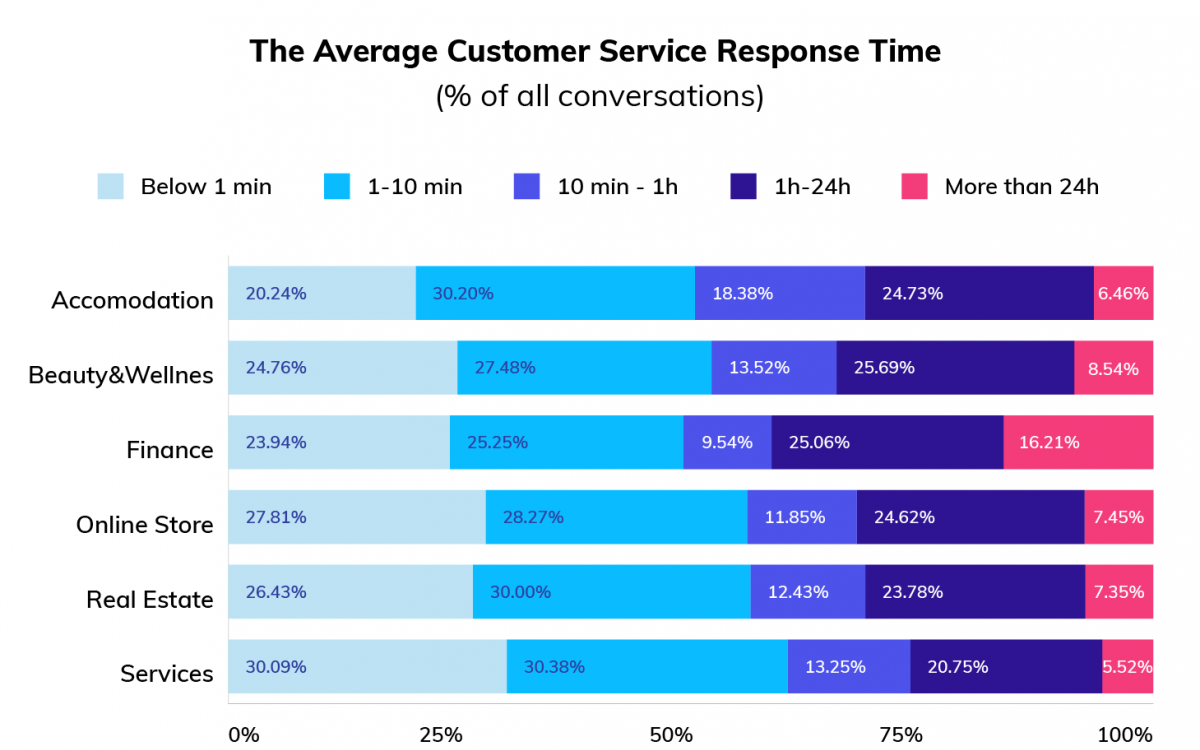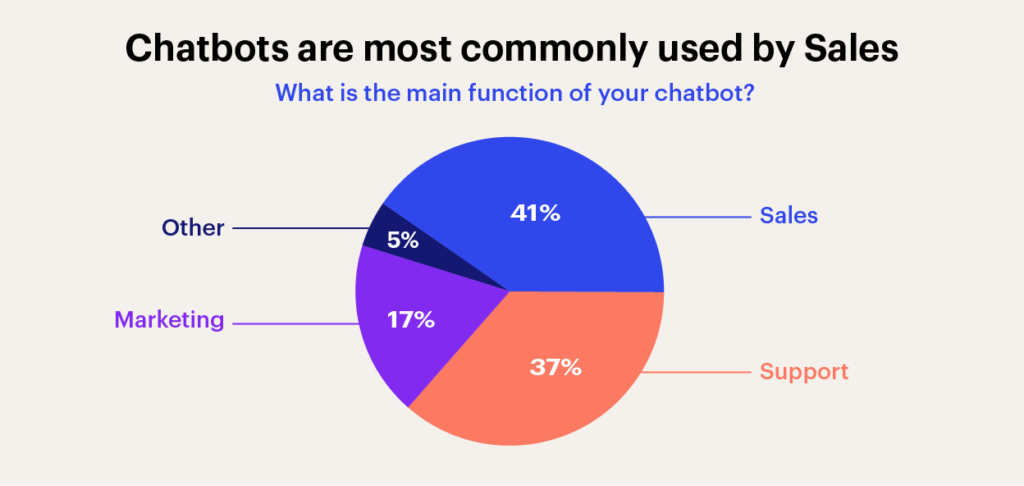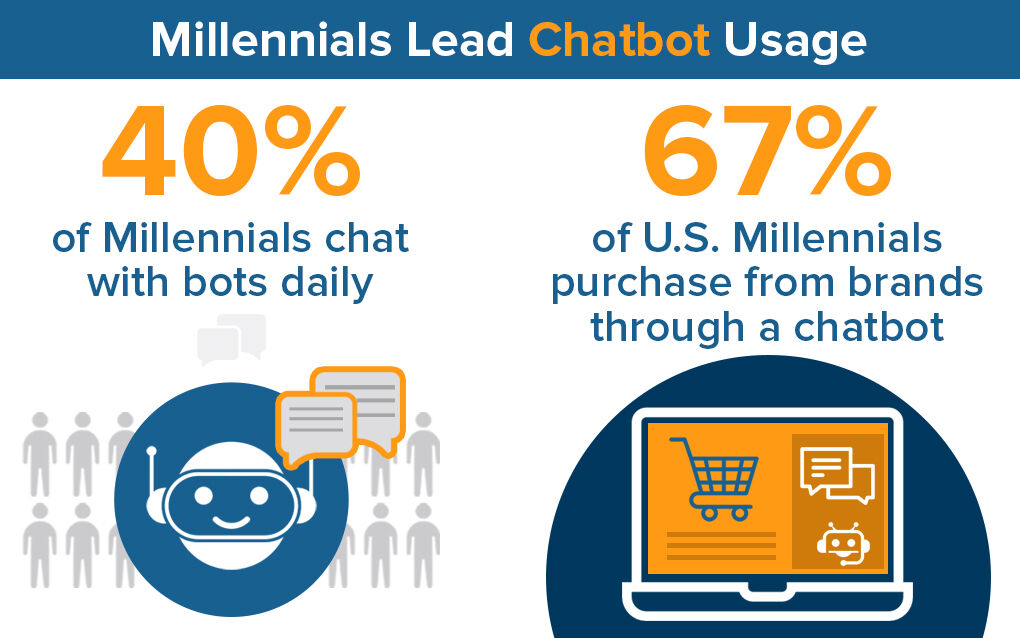Chatbots have evolved from just being digital robots to becoming one of the best customer service employees of an organization. Since COVID-19 pandemic, organizations have significantly digitized their business processes to provide more innovative methods of driving customer engagement and satisfaction. This has resulted in mass adoption of chatbot technology as everyone wants to stay ahead in the race to the top. According to a report by Mordor Intelligence, the chatbot market was estimated at USD 17.17 billion in 2020 and is projected to arrive at USD 102.29 billion by 2026.
To provide a holistic view, here is a compilation of the best Chatbot statistics for you:
CHATBOT MARKET STATISTICS
As chatbots keep on reducing operational costs by automating business processes efficiently, the market size will grow as more and more businesses plan to get their hands on this revolutionary technology. By 2024, Insider Intelligence predicts that customer retail spend through chatbots worldwide will reach $102 billion—up from just $2.8 billion of the year 2019.

HOW CHATBOTS HELPS IN REDUCING CUSTOMER RESPONSE TIME
Natural Language Processing (NLP) supports programming that is intended to mimic human conversations. Enabling organizations to divert straightforward and redundant inquiries, drive better client commitment and provide a seamless communication channel between businesses and customers, chatbots can truly help in reducing average customer service response. An independent survey conducted by Tidio shows how fast a customer expects a response in different sectors.

WHY CHATBOTS ARE USUALLY USED BY SALES
Chatbots offer instant responses to customers’ doubts and questions with just a simple click. It is your business’ primary source of contact for all new approaching queries, which helps cut reaction time and draws in clients before they even think about leaving. Chatbots are making it simpler for businesses to stay in touch with their clients on various channels. In this manner, organizations can leverage chatbot automation to generate more leads which will help them in increasing sales significantly.

MILLENNIALS ARE LEADING CHATBOT USERS
Twenty to thirty year olds are an outward-looking, optimistic populace that want all their tasks to be in a fast-forward mode including their conversations with their favourite brands. Thus, it is not difficult to understand the reason why utilizing chatbots to speak with organizations, rather than human help, works out easily for them. Chatbots and millennials are an ideal match. A chatbot “knows” about its millennial clients’ necessities through its data-driven insights that helps businesses to customize their service offerings in accordance with the needs of this generation. Millennials lean toward a natural and conversational style with regards to cooperating with organisations and chatbots are the perfect fit.

69% of consumers prefer to use chatbots for the amount of speed at which they can communicate and connect with a brand.
Salesforce
Regardless of being sixty years old, chatbots have begun to turn into an rising innovation just as of late. The chatbot pattern that many anticipated to die at this point has stayed consistent and solid during the previous few years. Online business people are gradually finding the advantages of chatbots.
Chatbots’ prevalence develops in accordance with the eCommerce business and market. Organizations that use chatbots convey quick client support, save time on repetitive tasks, and gather more leads as a result. Others, who are yet to attempt this sort of intuitive arrangement, foresee that they will likewise have their own custom chatbots in the coming years.

